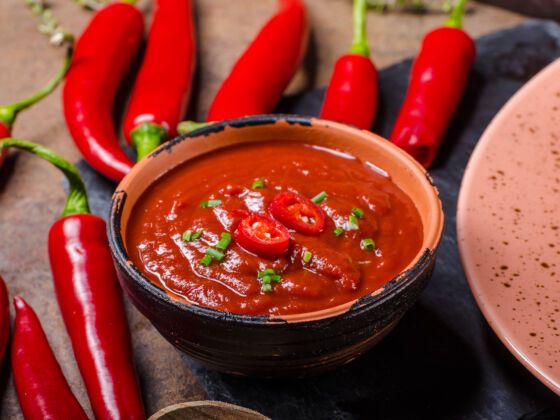Ajvar
Ajvar is a mushy relish that is very popular in The Balkans. It is principally comprised of red bell peppers, eggplant (aubergine), garlic and chili pepper. The main ingredients are both baked and stewed, which makes creating Ajvar quite a laborious and time-consuming process.
